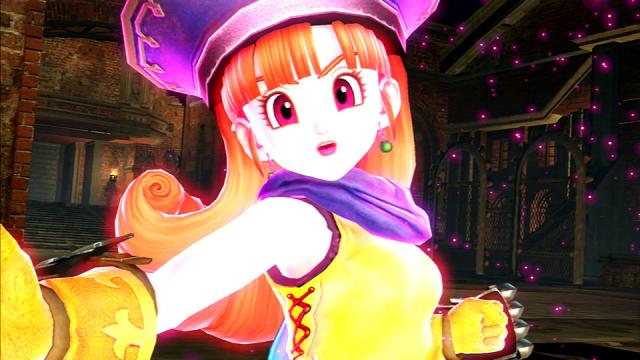Coming from a partnership between Square Enix and Koei-Tecmo’s Omega Force, it’s no surprise that Dragon Quest Heroes plays a lot like Dynasty Warriors. What is surprising, however, is how much it resembles tower defence games.
From the moment you start playing, Dragon Quest Heroes is clearly cast in the same mould as many a Dynasty Warriors title. It’s in third person, you play as an incredibly powerful hero, and you slaughter hundreds upon hundreds of enemies with a mixture of strong, weak, and super attacks. However, there is far more to the battle system than just that.
In Dragon Quest Heroes, each character also has a unique set of spells and special attacks that use MP (magic points). These attacks tend to do large amounts of damage to a group of enemies and can be used at any time — including the end of a normal attack combo. Moreover, you have a party of four characters in battle which you can switch between at any time. This allows you to build a party with different skills and special attacks to deal with the various strong enemies you encounter. When not under your direct control, the other party members will stay in your vicinity and attack any group of enemies you attack.
Unlike the majority of Dynasty Warriors titles, Dragon Quest Heroes is not concerned with supporting a massive allied army or capturing and defending zones that act as spawn points for enemies and allies alike. Rather, most missions fall into one of three categories: (1) eliminate all enemies, (2) defend a set point while taking out the enemy spawn portals, or (3) take down an extremely powerful boss. The second of these, is by far the most common — as well as the most interesting.
When defending a point, there is literally an infinite stream of enemies coming at you. The only way to stem the flow is to destroy the elite monsters that are holding the enemy spawn portals open. Many times, these portals are in opposite directions, meaning if you take your party to attack one, the point you are supposed to defend is open to attack by the other. This is where the game begins to take its cues not from Dynasty Warriors but from tower defence games.
As you defeat enemies, some turn into coins. You can then use these coins to summon the monster in question to your side. Some monsters only appear for a single attack or heal, but many stay and attack the general area around them until they are killed. Thus, you typically defend your point until you get enough powerful monster coins, then you set them free to defend your point — or otherwise obstruct the flanking enemy force — as you take your party to destroy some of the enemy spawn portals.
Sometimes, what you need to defend isn’t a point on the map but rather a person — and thus you escort them around a large map. This adds a new wrinkle to the formula as you cannot command or control a monster once summoned. (They just attack whatever is in their immediate area.) Therefore, you must think seriously about whether it is worth it to summon a monster or not — knowing that it will only be helpful in the short term. Simply put, the monster-summoning aspect adds a lot of strategy to how you play each mission.
The other highlight of the game’s battles are the bosses. Each one is orders of magnitude larger than your heroes and much more difficult to battle than the enemies you’ve been facing — most can take out a character in just a hit or two. To beat them, you need to not only use your strongest attacks but also strategically break off from the battle and defeat other monsters so that you can summon them to your own side. Several boss stages also contain powerful weapons turrets (with limited ammo) that can turn the tide of battle in your favour. These boss battles are epic and unique, making for a great capstone to each set of levels.
Dragon Quest Heroes is, without a doubt, a Dynasty Warriors game at heart — packed to the brim with all the hacking and slashing you’ve come to expect. However, it is also full of new additions to the usual formula that make for a refreshing change of pace. If nothing else, I can say that I’m currently halfway through the game and haven’t been bored yet.
Dragon Quest Heroes was released in Japan on February 26, 2015, for the PlayStation 3 and PlayStation 4. It is scheduled for a Western release sometime later this year only on the PlayStation 4.

Comments
4 responses to “Dragon Quest Heroes Is Part Dynasty Warriors, Part Tower Defence”
That is quite a handsome game. I think they should release the PS3 version in the west too.
They are! (Or is it just PS4?)
Oh yep, just 4
http://www.siliconera.com/2015/02/25/dragon-quest-heroes-coming-west-playstation-4/
Imagine if they did this with Final Fantasy next!